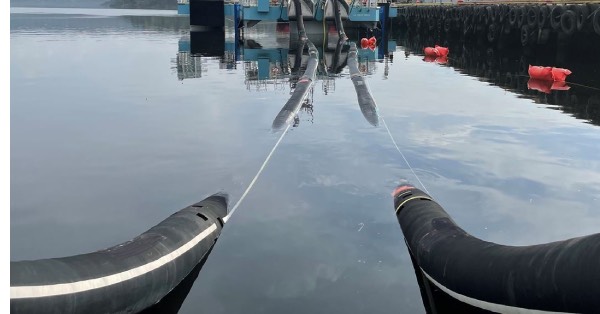This unique project establishes the optimal configuration of floating pipes by combining fluid dynamic modelling by SINTEF with data from ECONNECT Energy’s operations.
With additional support from Innovation Norway and Norwegian Research Council, the IPN project contributes to a body of fluid dynamics research, addressing the heat and mass transport phenomena required to improve the process configuration and control for floating gas distribution systems.
“SINTEF Energy Research is pleased and proud to contribute to the IPN Joint Research Project with our special competence within cryogenic process technology and fluid dynamics. Together with ECONNECT Energy we contribute to shaping the future’s energy solutions.” David Berstad, Project Manager and Research Scientist at SINTEF Energy Research.
Pioneering fluid modelling for cryogenic pipe applications
There is no previous reliable modelling to predict the flow rates for floating, flexible cryogenic pipes accounting for diameter, corrugation profile and insulation level, simulating leading floating pipes on the market. This modelling tool addresses methods to stabilise the friction factor of LNG and other non-aqueous fluids to increase the throughput capacity and decrease boil off effects, effectively reducing costs and increasing system efficiency.
This model will have significant commercial value related to scaling up cargo deliveries and predicting the behaviour of large volumes of fluid, as higher volumes of fluid can affect the velocity, pressure and contribute to a higher friction factor.
“The competence generated in the project will help to scale jettyless distribution technology and lower the barrier to cleaner energy substantially, by making these energy feedstocks more available,” commented Stian Magnusson, ECONNECT EnergyCIO. “This will enable industries and other users such as marine transport in Norway and abroad to make a switch from heavier fuels to LNG and ammonia.”
Findings from commercial data
The proprietary computational fluid dynamic models have been validated with data from ECONNECT Energy’s cargo deliveries to improve the process configuration and control for technologies using floating, flexible cryogenic pipes.
Findings using data from a 2021 LNG operation demonstrate a lower-than-anticipated friction factor, further proving system efficiency and capacity for increased liquid volume. ECONNECT Energy input data allows for benchmarking the operational performance of ECONNECT Energy’s jettyless system against traditional jetty solutions.
The CFD models can also be used to estimate the friction factor for other diameters and pipes for future technologies, hastening jettyless applications for zero carbon fuels and carbon capture.









































